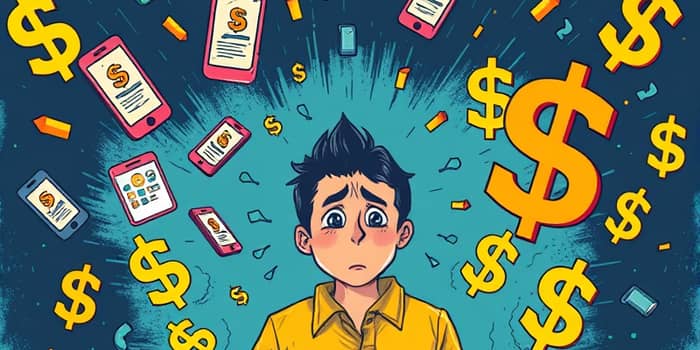
In moments of financial crunch, the promise of instant cash can feel like a lifeline. Yet what appears to be a simple bridge over troubled waters often leads borrowers into a storm far more severe than the initial need. High-cost lending traps vulnerable people in a cycle of debt that extends well beyond the loan’s face value.
Payday loans and their app-based equivalents advertise rapid approval and same-day funding. Borrowers seeking relief from unexpected bills or emergencies may find relief at first—but the true cost often emerges only later, when fees and interest accumulate into crushing obligations.
Payday loans commonly carry interest rates that dwarf those of traditional credit options. Many products feature APR figures exceeding 400%, a stark contrast to the 10–30% APRs typical of credit cards or personal loans. Consider a borrower who takes out a $500 advance and pays a $75 fee after two weeks: that equates to a 391% APR in practice.
These fees can swell quickly when borrowers roll over or renew loans, leading to multiple interest charges on the original principal. In states with minimal regulation, the effective cost of borrowing can skyrocket to four times higher than in protected markets. This disparity underscores how predatory lending preys on those least able to withstand financial shocks.
The structure of quick cash loans nearly invites borrowers to refinance. Since terms are so short, 75% of payday clients take out multiple loans each year. What begins as a single advance can spiral into a relentless cycle of borrowing just to meet previous obligations.
A practice known as “churning”—or repeatedly renewing a loan—adds fresh fees every time. Many borrowers remain indebted for over half the year, some extending into more than 400 days of continuous debt due to successive rollovers. Breaking free becomes an uphill battle when unpaid fees and renewed interest constantly expand the balance.
Financial stress from payday debt doesn’t just affect bank accounts—it erodes mental well-being. Borrowers describe feelings of shame, anxiety, and a persistent worry that any unexpected expense could trigger another loan. This persistent financial stress and anxiety can affect sleep, relationships, and even job performance.
When loan repayments are scheduled days apart, every paycheck becomes a calculated effort to allocate funds not just for necessities but also for looming fees. The constant juggling compounds pressure, creating a sense of instability that can persist long after the final payment is made.
Unlike traditional lenders, most payday providers do not report timely repayments to credit bureaus. While borrowers may clear their balances on time, they gain no positive credit history. Yet defaults and collections arising from missed repayments are recorded, delivering a negative hit to credit.
With damaged credit scores, borrowers face higher barriers to conventional loans, credit cards, or mortgages. This financial exclusion perpetuates reliance on expensive alternatives, trapping communities that can least afford it in a persistent cycle of predatory lending.
Escaping the quick-cash trap starts with awareness and access to better options. Credit unions often offer Payday Alternative Loans (PALs) at much lower APRs, coupled with extended repayment plans. Similarly, personal loans from reputable banks or online lenders can come with interest rates under 36% and terms up to five years.
Here are practical steps to consider before reaching for a payday advance:
Long-term resilience lies in building a financial cushion. Even small emergency funds—set aside incrementally—can prevent reliance on high-cost lenders. Automating savings, however modest, creates a buffer against unexpected expenses.
Moreover, educating oneself about credit scores, interest calculations, and consumer rights empowers individuals to make informed decisions. Local nonprofit organizations and community banks often run workshops on personal finance, offering tools to navigate future emergencies without resorting to predatory loans.
Ultimately, while quick cash loans promise immediate relief, they often deliver lasting hardship. By understanding the true cost—monetary, emotional, and social—borrowers can choose alternatives that protect both their wallets and their well-being. Financial freedom starts with informed choices and the determination to break free from cycles of debt.
References













